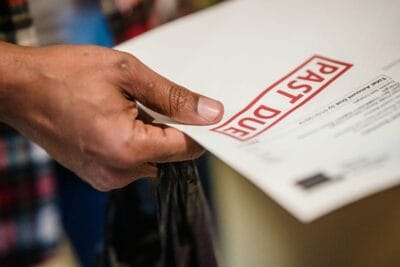When invoices go unpaid, most businesses ask the same question: When does this stop being a collections issue and become a legal one?
Before you can take a debtor to court, there’s a required step in nearly every state: issuing a Final Demand Letter. This isn’t just a formality, it’s the critical bridge between overdue receivables and attorney-led recovery.

Why a Final Demand Letter Matters for Debt Collection
A Final Demand Letter serves three purposes:
- Legal Prerequisite: Many states require creditors to send a formal written demand before filing a lawsuit. Without it, opposing counsel can argue that the debtor was never officially notified.
- Clear Documentation: It creates a paper trail that strengthens your case in court.
- Psychological Pressure: For many debtors, this is the moment they realize the creditor is serious.
Handled correctly, the Final Demand Letter can turn a slow-pay account into a paid-in-full account, without the need to set foot in a courtroom.
Two Ways to Send a Final Demand Letter
1. Send Your Own (First-Party Letter)
Some businesses draft and send their own Final Demand Letter. Done well, this can satisfy legal requirements and buy time before escalating to attorneys. Resources such as templates and guides can help companies write a compliant letter.
- Cost-effective starting point.
- “Sells the need to pay” while fulfilling legal requirements
- Send letter to Registered or Statutory Agent, copy existing contact
2. Attorney Demand Letter (Attorney-Led Option)
The alternative is to hand the matter directly to Stevens & Ricci. Our legal desk attorneys send a formal Attorney Demand Letter (ADL) from their office, which carries far more weight.
- Shows the debtor you already have legal representation.
- Often accelerates responses and recovery.
- Seamlessly escalates into litigation if payment isn’t made.
Why Attorney-Led Debt Collection Is More Effective
With over three decades and thousands of B2B claims, we’ve seen what happens when businesses rely on weak demand letters. Poorly worded, boilerplate letters waste time and can even hurt your position in court. If you’re not sure if your demand letter is up to par we can help. Our attorney-issued demand letters:
- Avoid technical mistakes that opposing counsel can exploit.
- Signal that legal action is imminent.
- Fit into a contingency-based commercial debt collection model, meaning you pay nothing unless we recover.
In short: while both paths are options, attorney-led letters give you leverage that self-drafted notices can’t match.
Example: Software and SaaS Companies
Tech firms often face unpaid invoices from subscription contracts or project-based services. These debts may start small but grow quickly. Sending your own Final Demand Letter might check the compliance box, but an Attorney Demand Letter gets the debtor’s attention and protects recurring revenue streams.
For SaaS companies especially, the combination of legal authority and contingency-based structure makes attorney-led demand letters a smart first step.
What Happens Next
If the debtor pays after receiving a demand letter, the case ends there. If not, our attorneys move forward with legal pressure, negotiations, filing suit, litigation, levying bank accounts, and seizing assets if necessary. The demand letter is just the start of a legal-first process designed to recover $10,000+ commercial debts quickly and effectively.
Take the Next Step
If you’re dealing with unpaid receivables, don’t let time work against you. Whether you want to try a Final Demand Letter yourself or have our attorneys issue one, we can help you take the right first step.
Contact our legal desk today to place your case and start the recovery process.







